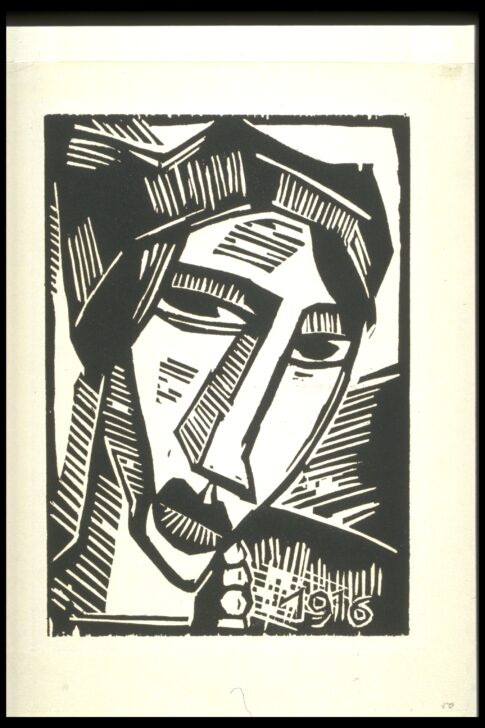Head of a Woman (Frauenkopf)
Karl Schmidt-Rottluff

Description
March 28, 2009
Schmidt-Rottluff, along with three fellow students of architecture, founded the artists’ association Die Brücke (The Bridge) in Dresden, Germany in 1905. This group of artists was in search of a more direct and unmediated (and thus more “authentic”) form of expression than that allowed by the academic style currently being taught in art schools. One could not get any more direct than the crude, simple means of woodcut—prints made from wood blocks with images carved into them by hand with a knife. Die Brücke contributed to the great revival of the woodcut medium at the beginning of the twentieth-century.
Woodcutting had special significance for Schmitt-Rottluff: when the trauma of fighting in World War I left him too shaken to paint, he found that the process of carving into wood was therapeutic and helped to steady his hand and mind. This print, completed during his military service, uses the bold, angular lines inherent in woodcut to great effect. The broad nose, almond-shaped eyes, and full lips evoke the art of Oceania and the Americas, which had a profound influence on Brücke artists.
Subject Matter:
One from a nunber of woodcut prints from the time that he was convalescing after serving in the First World War. "Head of a Woman" also shows the artist's stylistic interest in the art of non-western cultures, especially their treatment of the human figure.
Physical Description:
A monumentally stylized head of a woman. Her head is tilted slighty to the viewer's right. Her eyes, nose, and lips are large and almost mask-like. She appears to be wearing a hat of a modern style. Shading is executed with powerful parallel lines and cross-hatching. The year of the work's execution, 1916, appears in the lower right.
Usage Rights:
If you are interested in using an image for a publication, please visit https://umma.umich.edu/request-image/ for more information and to fill out the online Image Rights and Reproductions Request Form.